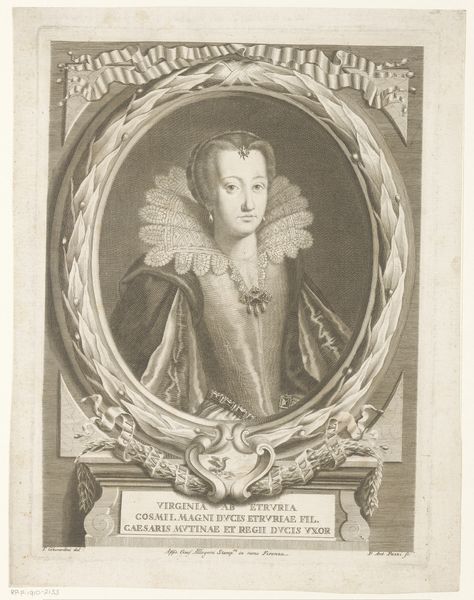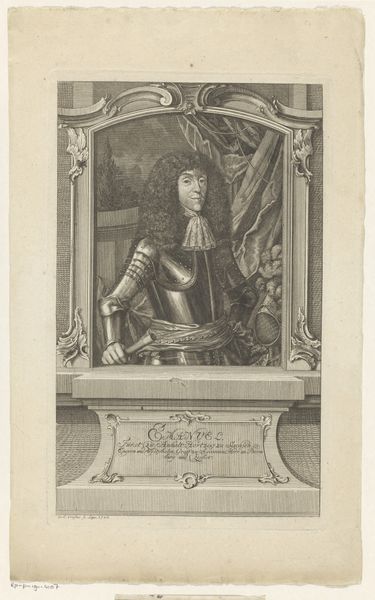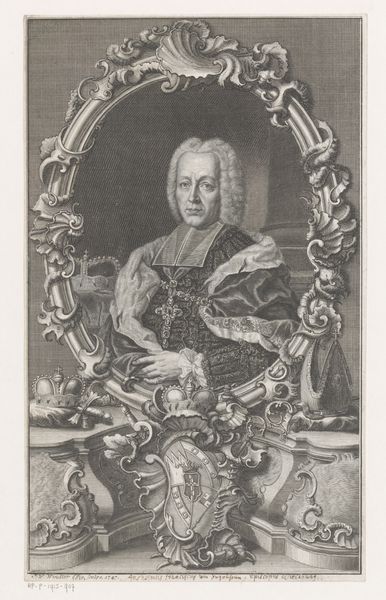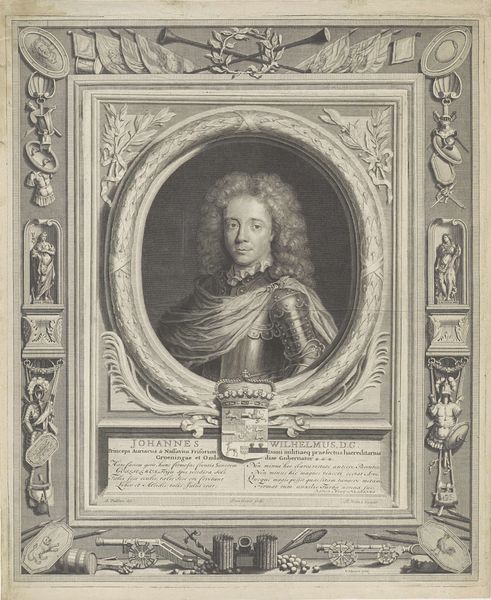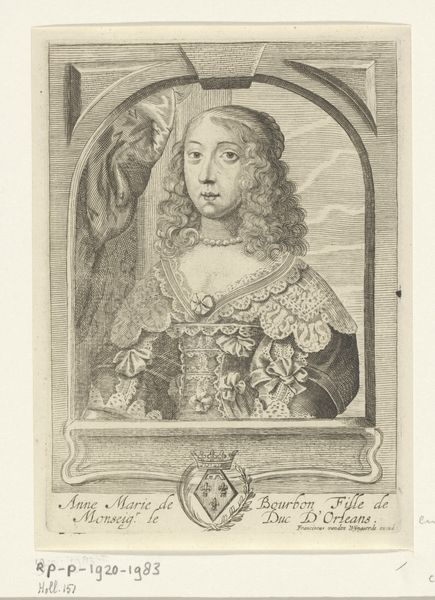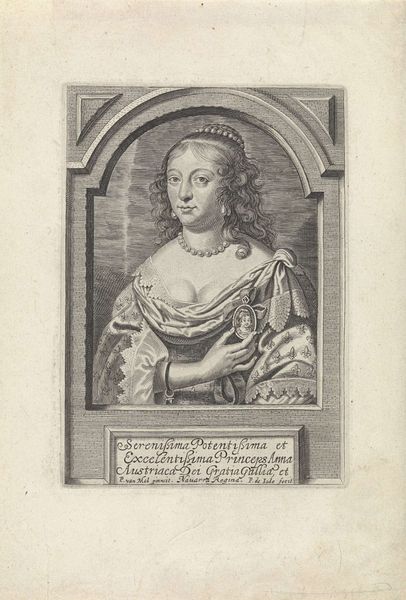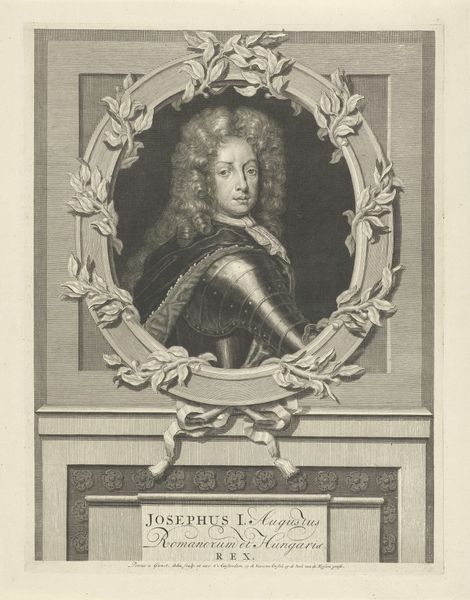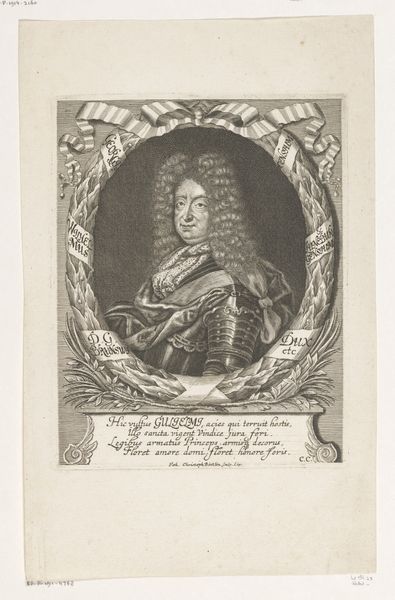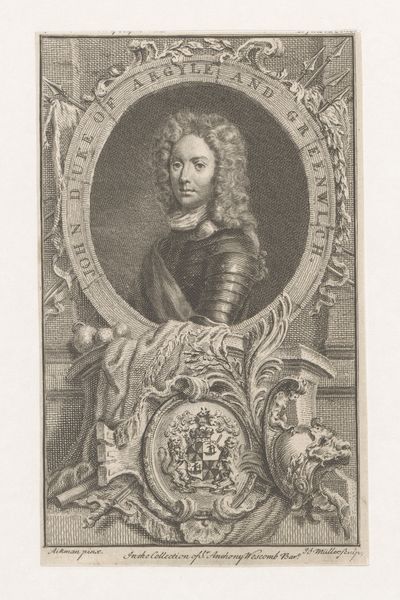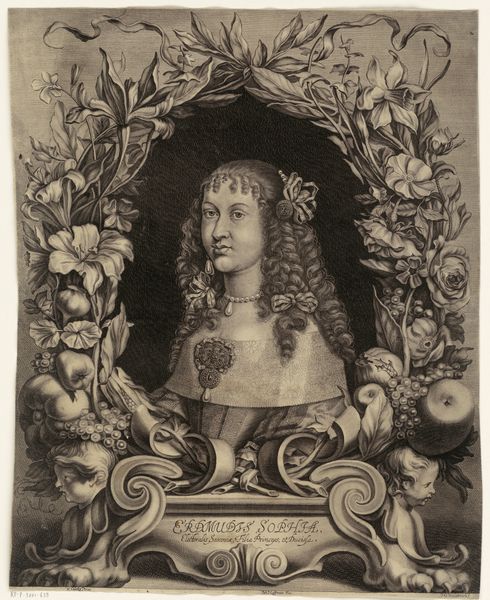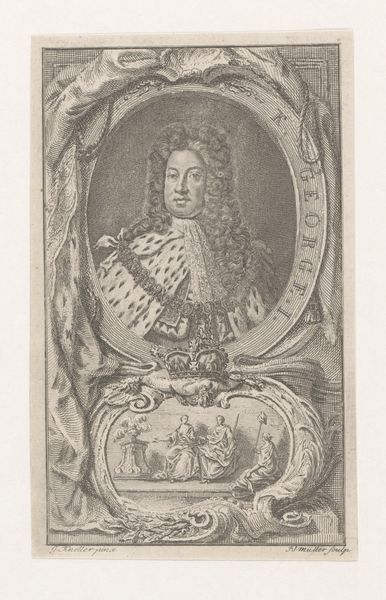
print, engraving
#
portrait
# print
#
old engraving style
#
history-painting
#
engraving
Dimensions: height 317 mm, width 182 mm
Copyright: Rijks Museum: Open Domain
Curator: Pieter van Gunst created this engraving, “Portret van Elisabeth Stuart, koningin van Bohemen,” sometime between 1669 and 1731. You can currently find it at the Rijksmuseum. Editor: Wow, okay, so my first thought? This image feels really weighed down. There's an incredible level of detail, but almost to the point of feeling oppressive. All those tiny lines, like she's trapped in a very elaborate cage! Curator: I appreciate your sensitivity to detail. From an art historical perspective, we see that prints like this served as important means for disseminating images of power. Consider Elizabeth Stuart's complex position. Though a queen, her reign in Bohemia was brief and fraught with political turmoil. Editor: So this isn’t just a pretty picture; it’s about power and loss? It looks so controlled. But there’s sadness too. Did you see that small scene under her portrait? It looks like someone mourning among classical ruins. Curator: Exactly. Context is key. The print allows us to think about Elizabeth's identity, not just as a queen, but as a figure caught in the crosscurrents of dynastic ambition and historical circumstance. Note also how the architectural elements act as a frame *around* the portrait frame itself. It emphasizes her confinement to social role, family expectations... Editor: Yes! A gilded cage, made literal! I am also seeing that, while technically impressive, the artist might have been aiming for something almost mechanical, like an early form of photo-reproduction. Less emotional expression, and more like…propaganda, almost? Curator: That gets us thinking critically about portraiture’s function at the time. The clean, precise engraving mimics a kind of authoritative “truth,” and certainly aims to solidify Elizabeth’s image and legacy. Editor: I still find it melancholic. Maybe because behind all that fine lacework and those tiny, precise lines, is still…just a person, looking a little lost. It's like looking through layers of history at a human being underneath. Curator: Precisely. The tension between the public image and the private self. Thinking about how individuals navigate systems of power continues to feel relevant. Editor: Definitely leaves you with a lot to consider. A powerful image, however ornate!
Comments
No comments
Be the first to comment and join the conversation on the ultimate creative platform.
